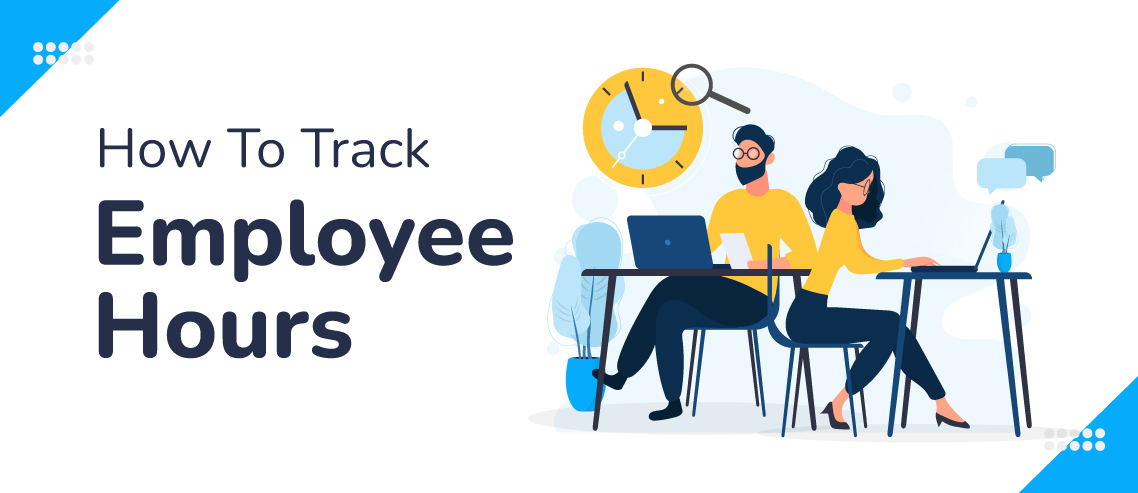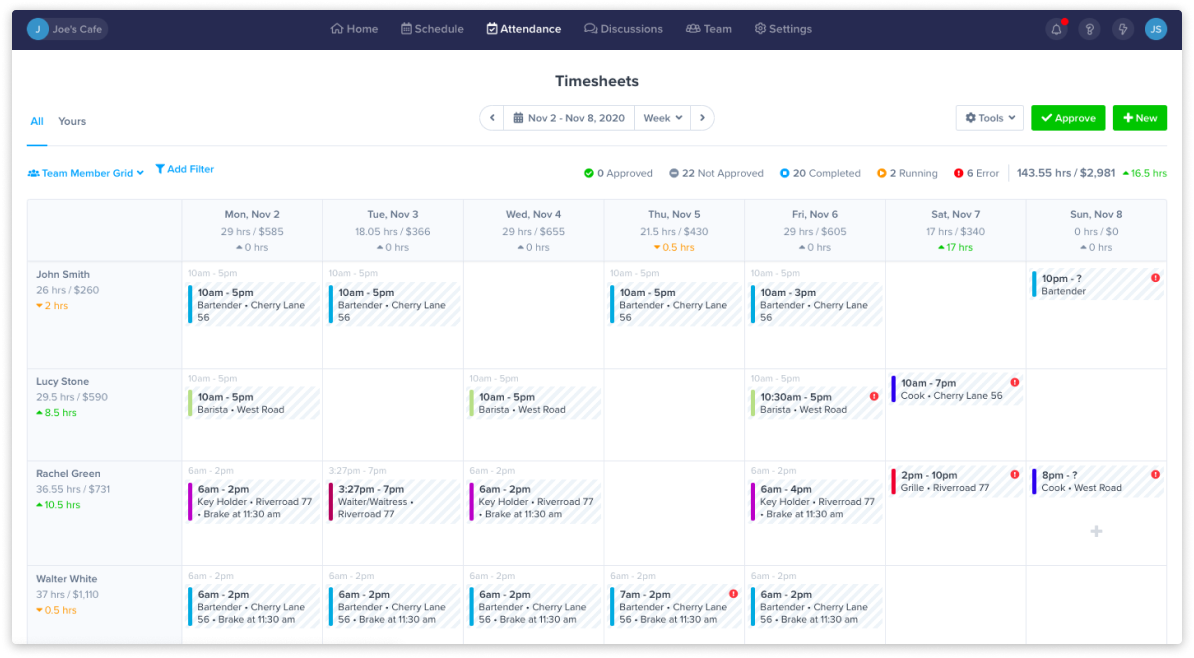How To Track Employee Hours

When you’re running a business, it’s imperative that you have a reliable system in place to enable you to track employee hours accurately. Mistakes in payroll can be costly, but risks can also instill a culture of uncertainty in your business.
Worse still, mistakes in employee time tracking can lead to compliance issues, where you risk getting penalized with hefty fines.
But how should you track your employee hours? Let’s take a look at all the reasons why a good tracking system – preferably an easy online tool – will benefit your business and all the ways you can go about it.
Why Keep Track of Work Hours
There are many reasons for keeping track of employee hours – such as for your own sanity while you match your team, their requirements, and varying pay rates against your needs as a business. But there are also more serious reasons to track employee hours, such as the fines you might face if you break employment laws.
1. More accurate payroll data
The more accurate and detailed your employee time-tracking, the more accurate your payroll data. Why is this important? If your payroll is littered with mistakes, inaccurate payment details, rates, clock-in and clock-out data, the more likely you are to pay your team the wrong amount, or worse still, not pay them at all.
The result: a dissatisfied, frustrated team.
2. Ensure adherence to employee laws
Employment laws differ from state to state, with some coming down harshly on businesses that make mistakes on pay rates, overtime, and payment times. Keeping a close track of your employee hours helps towards ensuring that you have the right data to avoid breaking any rules.
3. A better understanding of employee time management
Tracking your employee hours can benefit you too. In understanding your team’s work patterns, missed shifts, overtime uptake, lateness, or any number of other variables, you can analyze your staff productivity and drill down into what’s working and what isn’t.
4. A better understanding of which projects take the most time
Depending on the nature of your business, employee tracking could potentially highlight when a certain task or project is taking excessive time and human resources. These insights can help you distribute your teams more appropriately in the future.
Best Way to Keep Track of Work Hours
When it comes to how to keep track of work hours, there are a variety of ways. Some of them are rudimentary, while others are more sophisticated. The main thing is to find what works for you and run with it.
1. Pen and paper
If old-school pen-and-paper is your style, there’s no harm in going down this route to track your employee hours. As long as you have all the information documented, including each employee’s base rate and overtime rate, and you keep your documents in good shape, there’s nothing wrong with keeping things simple.
The downside to this approach is that it’s extremely time-consuming. Every time a shift is changed, swapped or dropped, you may have to draw up a new schedule and communicate those changes to the relevant team members. You also have to bear in mind that this approach is also wide-open to human error.
2. Time clocks
Another relatively old-fashioned approach to tracking employee hours is the time clock – introduced to industrial settings back in the late 1800s.
Time clocks typically rely on the employee punching in their clock-in and clock-out times, a seemingly simple solution to time-tracking. That being said, it’s open to abuse, where employees can find ways to “clock in” without actually being there.
Time clocks are also quite specialized and therefore relatively expensive. Also, because they are specialized, they can malfunction easily. Finally, they are not ideal for a hybrid or remote workforce when clocking in and out in-person isn’t practical.
3. Biometric clock-ins
It might sound futuristic, but it’s here. Biometric clock-ins work by tracking your employees’ hours using biological data such as facial features or fingerprints to verify their identity.
Slightly more secure against “buddy punching” that can be rife in traditional clock-ins, it’s not a cheap option. Not only do you have to purchase the clock-in software and hardware, but also the fingerprint or facial scanners – an expensive purchase that will end up largely impacting your bottom line.
4. GPS tracking
If you manage a team of employees who travel between a number of sites, GPS tracking might be helpful. It lets you geofence around your sites so that when an employee arrives on-site, their mobile app sends them a notification to clock in. The same goes for when they leave the site: they’re asked to clock out. GPS tracking also helps you to identify where your employees are at any time during their shift.
One aspect of the GPS approach is that your employees all need to have access to a mobile device with GPS tracking available. In addition, most clock-in apps require an in-app purchase to access the software.
5. Browser plugins
If your team is mainly sitting at computers, a browser plugin might be the best way to track your employee hours.
These rely on the employee to start the timer when they begin work and stop it when they’re finished. This approach is ideal for work that revolves around a number of projects or clients because it lets you track exactly how much time is spent on which of those items.
If it suits your business model, you can also track all the URLs that your employees visit and break down their time spent on various work tools and websites.
6. Desktop or mobile apps
For tracking both hourly, salaried, and contract employees, you can install both desktop or mobile apps to track their time. More often than not, and as is the case with ZoomShift, such apps are usually part of a wider work scheduling platform.
How the app tracks your employee hours will generally depend on the way in which your business operates. Say your employees have a set shift pattern. The app will nudge them to clock in and out at those set times. Or, if you’re more interested in how your employees spend their time, they can log their time spent on different projects or clients.
Introducing ZoomShift: The Easy Way to Track Employee Hours
ZoomShift is a go-to platform that allows you to track your employee hours along with a whole gamut of different scheduling and project management
It includes many of the time-tracking approaches we’ve discussed – GPS tracking, employee scheduling, and a mobile app – as well as other features such as time-off tracking, notifications, and shift-swap capabilities.

One of the main benefits of ZoomShift is that it saves businesses time and money. It reduces the risk of human error, keeps time-tracking efficient, and keeps all time-tracking in one central place that’s also linked to payroll and individual employee data.
ZoomShift also provides managers with insights on employee work hours, helping them to better project labor costs and make efficiencies when it comes to running a team.
Final Thoughts
Tracking employee hours can be done in a number of ways, but which method you choose depends on your business needs. It’s important to know what your business requires before investing in any time-tracking solution, but that upfront work will pay off once you’ve found the perfect fit.
JD enjoys teaching people how to use ZoomShift to save time spent on scheduling. He’s curious, likes learning new things everyday and playing the guitar (although it’s a work in progress).



